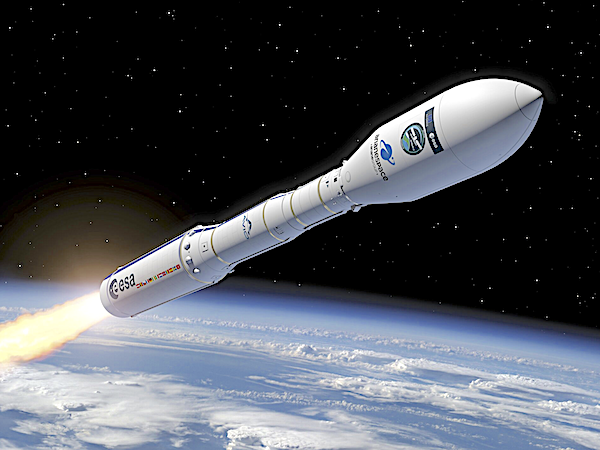
Update: launch postponed to Thursday 5 December 2024. Due to a mechanical issue preventing the withdrawal of the mobile gantry, the launch chronology has been stopped.
The earliest targeted launch date is planned for tomorrow Thursday 5 December 2024 at 22:20 CET (18:20 local time in Kourou). The launcher and its passenger the Copernicus Sentinel-1C satellite are in stable and safe conditions.
Tune in to ESA WebTV on 5 December from 22:00 CET to watch the satellite soar into space on a Vega-C rocket to be launched from Europe’s Spaceport in Kourou, French Guiana.
The launch will be the return to flight for Vega-C, Europe’s lightweight, high-performance rocket – further securing Europe’s autonomy in space after the successful launch of Ariane 6 last summer.
Once in orbit, Sentinel-1C will extend the Sentinel-1 mission’s legacy, delivering radar imagery to monitor Earth’s changing environment to support a diverse range of applications and scientific research.
The Copernicus Sentinel-1 mission provides all-weather, day-and-night radar imagery for the global monitoring of Earth’s land and oceans. The mission and data support critical areas such as environmental management, disaster response and climate change research.
Sentinel-1 data contributes to numerous Copernicus services and applications, including Arctic sea-ice monitoring, iceberg tracking, routine sea-ice mapping and glacier-velocity measurements. It also plays a vital role in marine surveillance, such as oil-spill detection, ship tracking for maritime security and monitoring illegal fishing activities.
Additionally, it is widely used for observing ground deformation caused by subsidence, earthquakes and volcanic activity, as well as for mapping forests, water and soil resources. The mission is crucial in supporting humanitarian aid and responding to crises worldwide.
The Sentinel-1 series began with Sentinel-1A, launched in April 2014, followed by Sentinel-1B in 2016. Each satellite is equipped with a C-band synthetic-aperture radar (SAR) instrument which operates in four modes and provides a spatial resolution down to 5 m and a swath of up to 410 km.
Although Sentinel-1B was retired in 2022 due to an electrical failure, Sentinel-1A remains fully operational, and has far exceeded its life expectancy of seven years.
The upcoming launch of Sentinel-1C will restore the mission to its full strength as a two-satellite constellation.
The post Mechanical issue delays ESA’s Vega-C’s launch of Sentinel-1C to Thursday appeared first on SNN.

